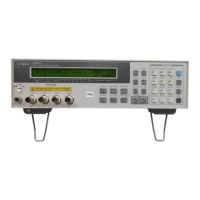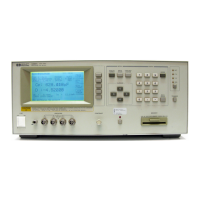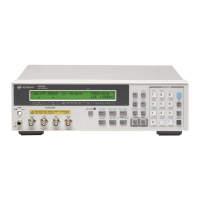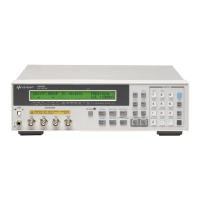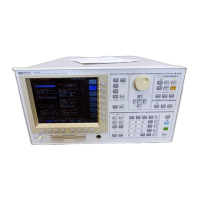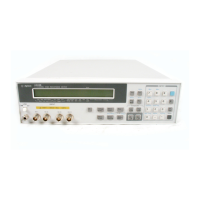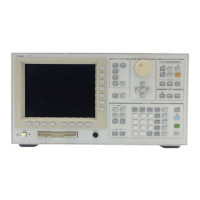11 2 Chapter 8
Saving/Recalling a Measurement Result/Measurement Setup
Save/Recall of a File
Save/Recall of a File
Specifying a location for save/recall
You can select a mass storage for saving/recalling a file from the flash disk (non-volatile),
the RAM disk (volatile), or a diskette. To select a mass storage, use the following
command.
• “STOD” on page 445
To change the current directory, use the following command.
• “CHAD” on page 278
Saving data into a file
You can save a measurement result, calibration/compensation data (internal data arrays),
measurement setup, and image on the LCD screen into a file.
To save one or more internal data arrays, use the following command to select the arrays
you want to save.
• “SAVCAL” on page 416
• “SAVDAT” on page 417
• “SAVDTRC” on page 420
• “SAVMEM” on page 420
• “SAVMTRC” on page 421
There are 2 commands available for save to a file. The difference between these 2
commands is their file format of the save (ASCII format or binary format).
• “SAVDASC” on page 416
• “SAVDDAT” on page 417
The following command available for save a data array to a file in the touchstone format.
• “SAVDS1P” on page 418
A measurement setup is saved as an instrument state including the calibration data array,
the compensation data array, and the memory array, in binary format. To save a
measurement setup, use the following command.
• “SAVDSTA” on page 419
You can use the following command to save data into a file, giving it the name of
AUTOREC.STA. The file having the AUTOREC.STA filename is automatically recalled
at power-on.
• “SAVPSTA” on page 421
An image on the LCD screen is saved in TIFF format. To save an image on the LCD
screen, use the following command.
• “SAVDTIF” on page 419
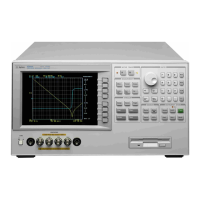
